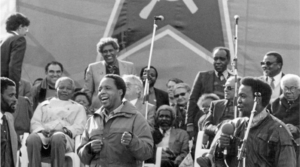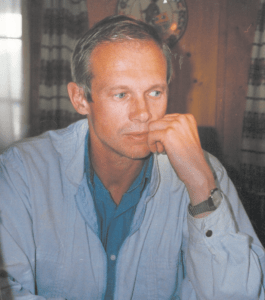
Unable to Find Evidence of a Conspiracy

At 10:20 am on 10 April 1993, a Polish immigrant to South Africa named Janusz Walus pulled up behind the head of the South African Communist Party, Chris Hani, in his driveway.
Walus shouted, “Mr. Hani!”, which caused the anti-apartheid leader to turn around. The turn gave Walus an easier target, and he shot Hani multiple times before getting in his car and driving off.
Hani’s neighborhood in Boksburg was mixed race, and a white Afrikaans neighbor saw what was happening and quickly wrote down the license plate of the shooter. She then immediately reported it to police. That report allowed police to arrest Walus fairly quickly, as he was still driving around.
This act threatened to spiral South Africa out of control into an all-out race war. The nation had been walking on eggshells as it attempted to transition from white-minority apartheid rule to the Rainbow Nation ideal put forth by Nelson Mandela and others who had risked themselves in the anti-apartheid movement.
Riots broke out in Cape Town, Durban, and Port Elizabeth. After a night vigil, angry attendees began torching homes near the vigil site just outside Soweto.
On 13 April, Nelson Mandela addressed the nation to try to stem the rising tide of violence and anger.
Tonight I am reaching out to every single South African, black and white, from the very depths of my being. A white man, full of prejudice and hate, came to our country and committed a deed so foul that our whole nation now teeters on the brink of disaster. A white woman of Afrikaaner origin risked her life so that we may know, and bring to justice, this assassin. The cold-blooded murder of Chris Hani has sent shockwaves throughout the country and the world…Now is the time for all South Africans to stand together against those who, from any quarter, wish to destroy what Chris Hani have his life for – the freedom of all of us. –Nelson Mandela 13 April 1993
Walus would not speak to police at first, but eventually he misjudged a police officer, believing him to be sympathetic to the white power structure. He gave enough information to the police officer to also implicate a Conservative Party member of Parliament, Clive Derby-Lewis.
Because of this confession, Derby-Lewis was able to be connected to the weapon used by Walus to assassinate Chris Hani.
Both men were tried and convicted of Hani’s death within six months and sentenced to death, although that sentence became life imprisonment when the laws involving judicial punishment changed. The two attempted to gain amnesty from testimony in front of the Truth and Reconciliation Commission, but were turned down because the Commission was, “…unable to find evidence that the two murderers convicted of the killing of Chris Hani took orders from international groups, security forces, or higher ups in the right-wing echelons.“

At his trial, Janusz Walus testified about why he had murdered Hani, “I did it for the CP [Conservative Party] and to stop communists and radicals from gaining power in this country.“
Elections were held one year after Hani’s death. Walus ad Derby-Lewis, despite their best efforts and a murder, were unable to prevent the progress toward democracy.
To read more about South Africa, please click here.
- June 23, 2021
- History
